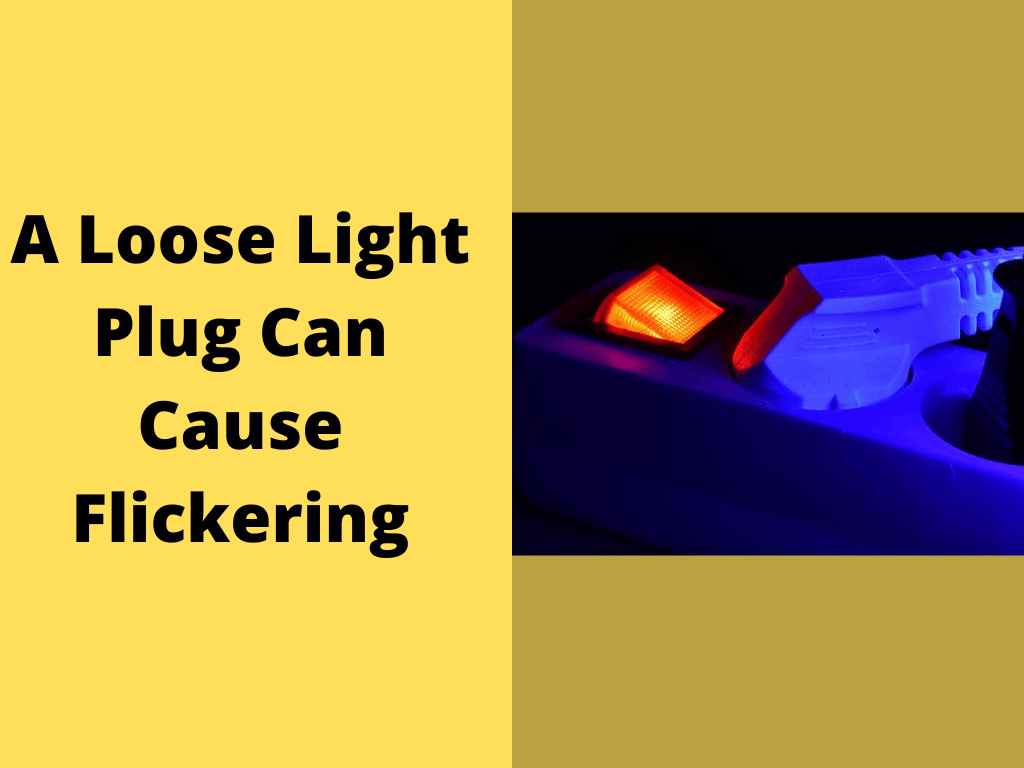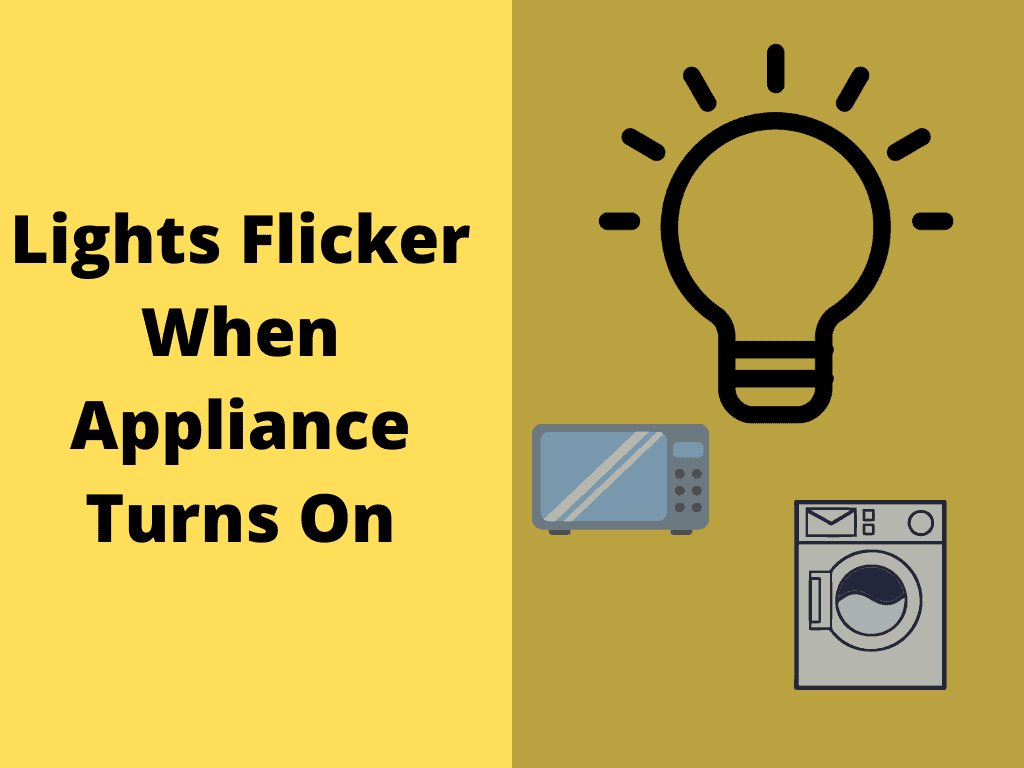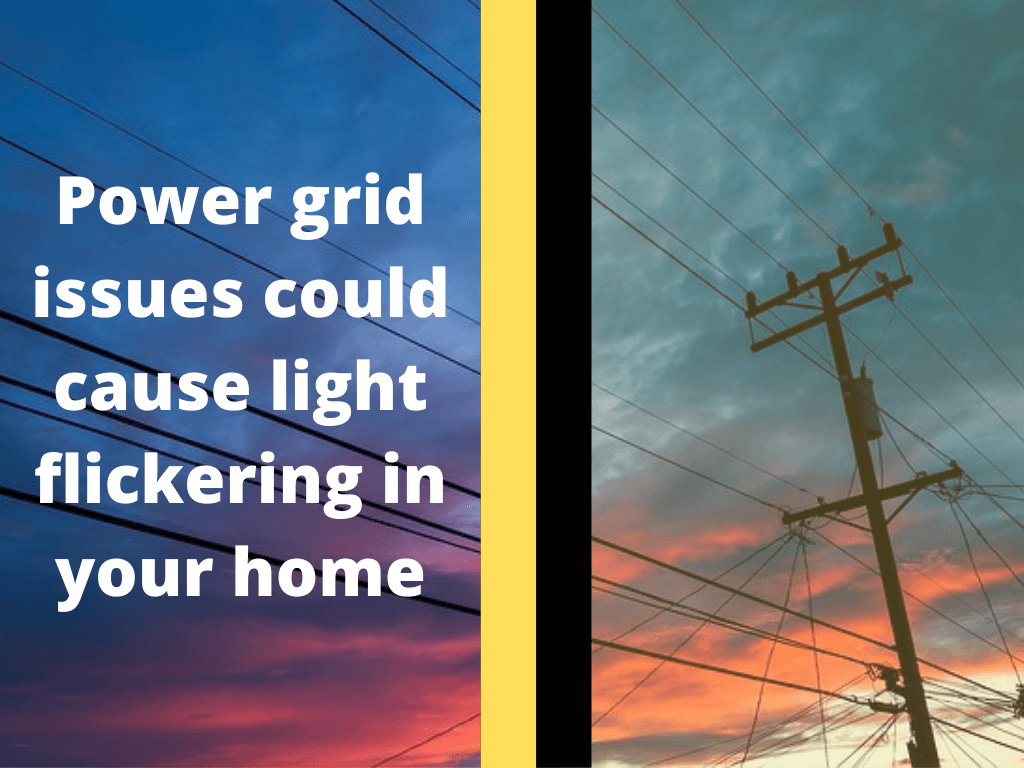If you have a problem with lights flickering when an appliance turns on, your home’s wiring may be faulty or you may have too much load on one circuit, loose bulbs can also cause flickering, let’s go over what can cause it and how to fix it.
Minor problems that you maybe can fix by yourself if your lights flicker:
- Problem with the bulb not screwed in tight enough
- Wrong bulb type for your dimmer switch
- Loose light plug
- Faulty light or fixture switch
- Appliance pulling large amounts of current on startup, causing a voltage drop and flickering
Need an electrician? Get a free quote now!
Why Do My Lights Flicker When I Turn on Appliances?
Lights flickering is a common problem in the home. It can be caused by faulty wiring, or too many appliances plugged into one circuit. Learn how to fix your flickering lights when turning on any appliance.

Tighten loose bulbs
Check lighting fixtures and bulbs for loose connections that may cause increased resistance and result in flickering lighting.
Loose light bulbs can be a common problem in many homes. Check your sockets to make sure they’re making proper contact with the bulb and check recessed lights for loose connections too!
If the problem is not in your lighting fixtures, you may need an electrician to help solve it.
A loose light plug can cause flickering
It could be a loose connection between the plug and the outlet. Check to see if the lamp’s power cord is tight in the wall socket.
Upgrade old or incompatible switches
It’s possible that the problem is not with your LED bulb but rather with your light fixture. Did you know that older dimmer switches made for incandescent bulbs won’t work well with an LED? If the light bulbs are flickering, this is likely because they’re connected to a dimmer. Loose or poor wiring behind the switch can also cause a flickering light.

Know the ratings for your bulbs and dimmer to make sure they are compatible. Mismatches in these can lead to common fixture problems like buzzing or flickering.
Try replacing your current dimmer with a new device, like the Lutron Caseta, remember to turn off the power from the circuit breaker before you start installing it.
If flickering happens when you use a dimmer switch and replacing the switch doesn’t solve the problem, consider upgrading to smart bulbs that don’t need physical switches!
If you get frustrated with lighting problems, don’t hesitate to call in a professional. They’ll ensure that your home isn’t at risk of an electrical fire and can repair any damage done by the problem.
Your problem may be an overloaded circuit—meaning that these appliances are pulling more electrical current than the circuit can handle.
Major problems with flickering lights that usually require an electrician to fix them:
- Sensory overload on a circuit
- Voltage fluctuations
- Loose or outdated wiring
- Problem with the electric utility service
- Problem with the meter box or main service cable connection
Need a professional electrician? Get a Free Estimate – Nationwide
Lights flicker when the appliance turns on overloaded circuits
If the simple fixes above don’t solve your problem, then it’s time to look into your electrical panel and see if the problem could be there.
AC, a tumble dryer, and a microwave can all cause lights to flicker in your home. If your light is on the same circuit as one of these appliances then the circuit is probably been overloaded. You should place larger fixed appliances on a dedicated circuit so they don’t overload other circuits like this.
You can also try switching out appliances to see if you can identify which one is causing the issue. If they all flicker then there might be something wrong with your circuit breaker or electrical panel.
This is a common cause of lights flickering in homes (though not always) and can be easily tested by switching circuits for the appliance. Flickering lights when an appliance turns on can mean that the light is on the same circuit as your appliance.
If your lights flicker when you turn on appliances it could be faulty wiring causing it
If your lights are dimming at home, you may have old wiring that can’t keep up with the demands of modern-day appliances and electronics.
Loose wiring can not just cause flickering lights but is a leading reason for house fires. The problem may be systemic or found in only one place but is always dangerous.
Loose connections in an outlet, light, or switch box can cause arcing, where electrical current hops over gaps in the electrical connection. This is a big cause of electrical fires. If a circuit connection is loose, it generates a high resistance point, which in turn generates dangerous point heating. A single loose connection can jeopardize your entire system.
If you’ve noticed an increase in flickering but you haven’t done any modifications to your electrical system, loose wiring could be the problem. There are a number of likely problem areas: a switch failure, loose fixture wiring, old connectors in the breaker box, or loose service conductors in the main electrical panel.
If damaged or improperly installed wires are causing this issue a licensed electrician should inspect your electrical system as soon as possible. Wires corroded, frayed, loose, or improperly installed pose risks like fire hazards and electrocution which could put you in danger until they’re repaired.

Power grid issues could cause light flickering in your home
Are you finding that your lights dim when appliances turn on? This could be a sign of an issue with the power grid in your neighborhood. The abnormalities within it can impact the lighting and cause issues for those nearby, especially if there is increased demand for resources.
Every home should register between 115 and 125 volts, but if your readings are off then you may have an underlying problem. You can check the voltage with a device called a voltmeter to get accurate measurements of how much power is coming in at each moment. If you don’t what you are doing or how to use a voltmeter, a professional electrician will do it for you and it does not take long to check it.
The electrical usage of your neighbors could be causing the flickering
Your home is likely connected to the same electrical transformer as other homes in your area, and if a neighbor has an unusually high-powered load on their circuit it might cause flickering lights at both residences. If this continues or you have any other issues with power fluctuations, contact an electrician for assistance in identifying what’s wrong.
Conclusion
If the flickering is occasional and only happens for a brief moment at first, then this may not be an issue. Large electrical appliances draw more current as they startup which causes a voltage drop that results in lights going dim or briefly flickering when we turn them on. Even with well-designed systems, there can still be some minor issues like these so it’s good to know how to spot if something needs attention before anything goes wrong.
If the flickering is consistent, severe, and doesn’t stop right away there may be a problem. The issue might arise from an appliance itself it could be a bearing failure, a bearing failure will cause your appliance motor to pull more current than usual or it could be too much sensory overload on one circuit. Call an electrician to find out what’s wrong!

